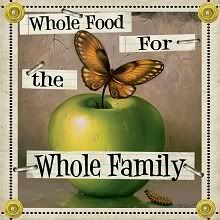
Soaking is so very easy that it hardly deserves a post all too itself. However, the benefits far outweigh the minimal time it takes to presoak. All it really takes is a couple minutes the day beforehand, which in the end helps you be a little prepared for the next day.
There are different methods out there but so far, this has worked for me. I have had a great coach, Miss Kara Bagley. For those of you who are soakers, please feel free to share your method so we can all learn off each other. Here is how it goes down in my kitchen:
12- 24 hours before the time of cooking, and preferably 24 hours, start your soaking. It is easiest to remember to just start it after your breakfast so it is ready for the next breakfast, if you are going for a breakfast food. Most gluten free grains do fine with 7-10 hours of soaking.
* Put in your flour called for in the recipe. Use a glass bowl. Hopefully you are using a good, freshly ground whole grain. No need to have a sprouted flour when you are going to soak.
* Add in the liquid called for. If it is milk, use buttermilk or kefir. If it is water, you need to add an acidic medium. Add 1 T. of acid base per cup of liquid. This can be kefir, lemon juice, yogurt, vinegar or buttermilk. If the mixture is too dry, you can add the oil and sweetener like honey, maple syrup or molasses. It doesn't have to be thin, just moistened.
* Cover with a lid or plastic wrap so it won't get dried out. Just don't let the plastic wrap touch the dough. No plastics in our food, please. Keep in a warm place , away from a draft. In the oven is great ( no heat) or on the counter out of the way of a vent.
* When you are ready to prepare, add the rest of the ingredients. I find sometimes I need to add a little extra liquid as the soaking expands the grain a bit.
I have found that not all of my recipes work this way as some don't have much liquid but rely on fruit or eggs as a base. I will use sprouted flour in that case. If you are doing oatmeal, I think it tastes best to soak with the lemon acid then rinse before you cook it. It will take a much shortened cooking time for oats after you soak. The first time I soaked my oats, my daughter asked me if the oats were different. She loves oatmeal but always had a bit of a stomach ache after she ate them. I told her they were the same steel cut oats but I soaked them. She didn't have a stomach ache. See, soaking works! I am sold.
If you don't know what kefir is, stay tuned. We will have a little chat about raw milk, kefir and yogurt next. So much to learn. I am still new to much of this too so I would love any comments. It's a learn as we go process. Thanks for joining. I am impressed with all you great moms out there trying to make your lives better. Such a noble mission.
And, if anyone out there has the creativity to design me a new blog header, I will give you something for free. I am so done with my template. I need something new. Just shoot me an email and I will give you my new slogan. Thanks!


















14 comments:
Really?! Its that easy? Thanks so much for sharing. I didnt know if you pre soaked, you didnt need to sprout. I have been stressing over sprouting, but I think I will try this first.
And I cant wait to read your info on kefir. I just got started making my own, thanks to Kara.
Thanks! I am off to soak our pancakes for tomorrow while all 3 of my kids are napping!
hi! I just came across your blog the other day, and this post is so perfectly timed as I'm *just* getting into soaking. great info - thanks!
I just found your blog and I'm stoked! I'm not quite to the soaking stage yet, but hopefully I will be soon. I think I'm on your step 10 (except for my lack in some of the equipment and recipes). Looks like you have some fantastic info! I have a "food" blog thedanielseats.blogspot.com but I'm a super amateur/beginner cooker, it's mostly to get/share ideas.
Do you happen to know anything about almond milk? I have heard that it is great for you and better for those lactose impaired like myself.
almond milk is a great alternative to milk. As with most things, make sure you rotate it out with rice milk now and then so you don't develop an allergy to it. You can use it just like milk in any recipe. Coconut milk is also great to use for variety in cooking.
what is the Organic Acid test that you used to test for Celiac's disease and Candida? Where do I go, and where do I find it?
The Organic Acids test can be ordered by Doctors but many mainstream Dr.'s don't understand it. Most naturopaths do. You could request it from your Dr.You can also subscribe to the Autism Action Plan website for a nominal monthly fee and you can order the test yourself there. They give you a tutorial to understanding the test results as well. The test measures many things; yeast, bacteria level, neurotransmitter levels, etc. It isn't a definite marker for celiac's but shows that the bacteria levels in certain areas may indicate it. The test costs about $250 and some insurance companies do cover it. I use Dr. Carrie Rittling in Mesa for the tests. Her number is 985-0000
ok shari. if you soak, then doesn't your ratio of water to oatmeal change? mine was too watery since it had already soaked some water up. do i just add 1/2 the water or did yours not do that?
Rachel,
After you have soaked your oats, drain them then put them in the pan. Then, cover with water until you have about 1 inch more water than the oats. Put in a little coconut oil and dash of salt. I learned this in Kara's class and it worked out great. It took only a few minutes on the stove or a couple in the pressure cooker. I did this with steel cut oats so it may be a little different with rolled oats. It takes a little experimenting at first to get your new ratios down.
Wow thanks for the tips. I'm having hard time with soaking before, I really don't know how to do it. THis is a really great blog. If you wont mind I'd love to guide Foodista readers to this post.Just add the foodista widget to the end of this post and it's all set, Thanks!
I froze lemon juice in jam jars this year. With soaking, liver cleanses and cooking, I go through it fast an ice cube no longer suffices. I made my granola with lemon juice this time and didn't strain. http://goodlookingcook.blogspot.com/2009/09/feel-good-granola.html. It turned out really good.
I was just going to make your granola so thanks for the tip. I will try it out! I have a freezer full of lemon cubes, I will have to try the jam jars also.
Soaking is good to neutralize the phytic acid, but remember soaking flour or grain does not have the added benefits of sprouting. Sprouting converts the starch into a plant and the nutrients come alive and are now in a form the body can absorb. I've noticed a huge difference in my health since I switched from soaking to using sprouted flour from Essential Eating. In my research, they are the only company that tests to assure that their flour is sprouted. Just an FYI. Thanks for the great blog!
CC,
Thanks for the info.I have been trying to find out which is better, soaking or sprouting and prefer the sprouted flours.
Post a Comment